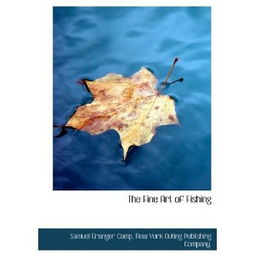Content:
Fishing in reservoirs can be an exhilarating experience, especially when it comes to catching common carps. These highly sought-after fish are known for their fighting spirit and delectable taste. Whether you are a seasoned angler or a beginner, there are several techniques you can employ to improve your chances of landing a trophy carp. In this article, we will discuss some of the best reservoir fishing techniques for catching common carps.
Choose the Right Equipment
To begin with, it is essential to select the appropriate equipment for reservoir fishing. The following are some essential items you should consider:
a. Rod and Reel: A medium-heavy to heavy-duty rod with a fast-action tip is ideal for landing large carps. Match the rod with a sturdy reel capable of handling heavy line and a good drag system.
b. Line: Use a monofilament line with a breaking strain of 10-15 pounds. This line is strong enough to handle the pressure of a fighting carp while remaining flexible enough to allow for subtle presentations.
c. Hook: A size 6-10 hook with a wide gap is suitable for catching common carps. The wide gap allows for easier removal of the hook from the fish's mouth.

d. Bait: Choose a bait that appeals to carps, such as corn, bread, or boilies. Ensure that the bait is fresh and has a strong aroma to attract the fish.
Locate the Fish
Understanding the behavior of common carps is crucial for successful fishing in reservoirs. These fish are often found in deeper areas with plenty of cover, such as submerged trees, weed beds, and rocks. To locate the fish:
a. Scout the reservoir: Spend some time exploring the reservoir and note areas with potential fish-holding spots.
b. Use a fishfinder: A fishfinder can help you identify the presence of carps in specific areas. Look for schools of fish, as carps often travel in groups.
c. Observe the water: Pay attention to the water's surface. Carps tend to feed in areas with less disturbance, such as calm waters or areas with less boat traffic.
Present the Bait
Once you have located the fish, it is time to present your bait effectively. Here are some tips to improve your chances of catching a common carp:
a. Dead bait: Drop your bait to the bottom and allow it to sit still. This method is particularly effective in areas with plenty of cover, as it mimics the natural behavior of foraging carps.
b. Stalking: If the fish are active, try to present your bait in a manner that mimics the movement of an injured fish. This can be achieved by twitching the rod tip or using a slow retrieve.
c. Use a float: A float can help you present your bait at the desired depth. Adjust the float's position to ensure that your bait is in the strike zone.
Patience is Key
Catching common carps requires patience. These fish are often cautious and may take some time to bite. Here are some tips to help you stay patient:
a. Keep your饵料新鲜:确保你的饵料新鲜,具有强烈的气味,以吸引鱼。
b. Adjust your approach:如果鱼儿不咬钩,可以尝试改变你的诱饵或诱饵的呈现方式。
c. Be prepared for a long battle:一旦鱼儿咬钩,准备进行一场持久战,使用合适的技巧和耐心,直到鱼儿被成功捕获。
Properly Handling the Fish
After landing a common carp, it is essential to handle the fish properly to ensure its survival. Here are some tips:
a. Use a landing net: A landing net helps you safely remove the fish from the water without causing unnecessary stress.
b. Avoid unnecessary handling: Once the fish is in the net, avoid unnecessary handling. Keep the fish in the water as much as possible.
c. Release the fish: If you plan to release the fish, do so as quickly as possible. Ensure that the fish is fully recovered before you release it back into the water.
In conclusion, catching common carps in reservoirs requires the right equipment, knowledge of their behavior, and patience. By following these techniques, you can improve your chances of landing a trophy carp. Happy fishing!












